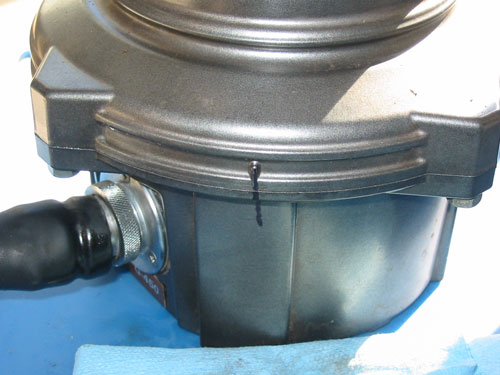Heathkit TC-1 Tube Checker - Theory of Operation - Quality Check
Heathkit TC-1 Tube Checker Theory of Operation - Quality Check
The Quality Check is the main function of the TC-1 Tube Checker. In this mode, the tube is connected into the circuit to act as a simple diode. No effort is made to find how much gain a given tube might have in other configurations. This is a very basic test of how well the tube emits electrons from its cathode and transfers them to the plate of the tube.
In the diagram below, the Red circuit is the plate supply circuit, typically 30 Vac, except for gas regulator tubes, which use the 250 volt winding of the transformer. With the bank of 10 switches, each switch is connected to a different pin of the tube under test. Switch A = Pin 1, Switch B = Pin 2, etc… Switches are set according to the roll chart for a specific tube type.
So all tube pins set to the top position are connected to the same electrical point, which has the plate supply voltage from the transformer applied. Typically these will be the plate and grid sections of the tube. Depending on the tube type, the “Type” switch (TC13) will insert a plate resistor in line to limit current through the tube.
For the tube under test here, we see the plate resistor dropping about 25 Vpp. This indicates that the tube is averaging about 10.7ma of plate current during the test.
All pins that have their corresponding switch set to the bottom position share an electrical connection to the cathode circuit. Typically, this will be the cathode and one side of the heater element. The connection provides the return path to the 0 volt windings of the transformer.
The plate/cathode current returns through the 200 ohm “Plate” control to the 0 volt winding of the plate transformer winding.
We can see that the 200 ohm “Plate” control is dropping about 5 Vpp. This indicates that the tube is conducting at an average of about 10.3 ma of current flow. That’s pretty close to the plate reading, so there is some confidence there.
The center tap of the “Plate” control picks off a portion of the voltage developed by the plate/cathode current running through it. This voltage is applied to the meter circuit via a scaling resistor set by the “Type” control again, in a second section of the switch.
With the expected current flowing through the tube, the plate control set as specified in the roll chart, and the appropriate scaling resistor set, there will be somewhere around 0.7ma flowing through the meter. This causes it to swing into the “good” region.
The meter shows about 36mvpp across it. We determined in an earlier post that the meter resistance was about 176 ohms. So this should swing the meter with about 0.73ma, or 3/4 scale. And it is pretty close…
If the tube is weak, not as much current will flow in the plate/cathode circuit, and the resulting voltage will be lower across the 200 ohm plate control. This lower voltage will be read as a lower swing on the meter, resulting in a failed or marginal reading.
To check for open elements, the user moves the switches in the top position to the bottom (one at a time). With each one, the meter should drop from the normal reading. It will usually drop a lot when the grid is switched, and less when the plate is switched. Any drop indicates that the tube element is not open, which implies that it is good. If there is no drop at all, the element may be open.







Comments
Post a Comment